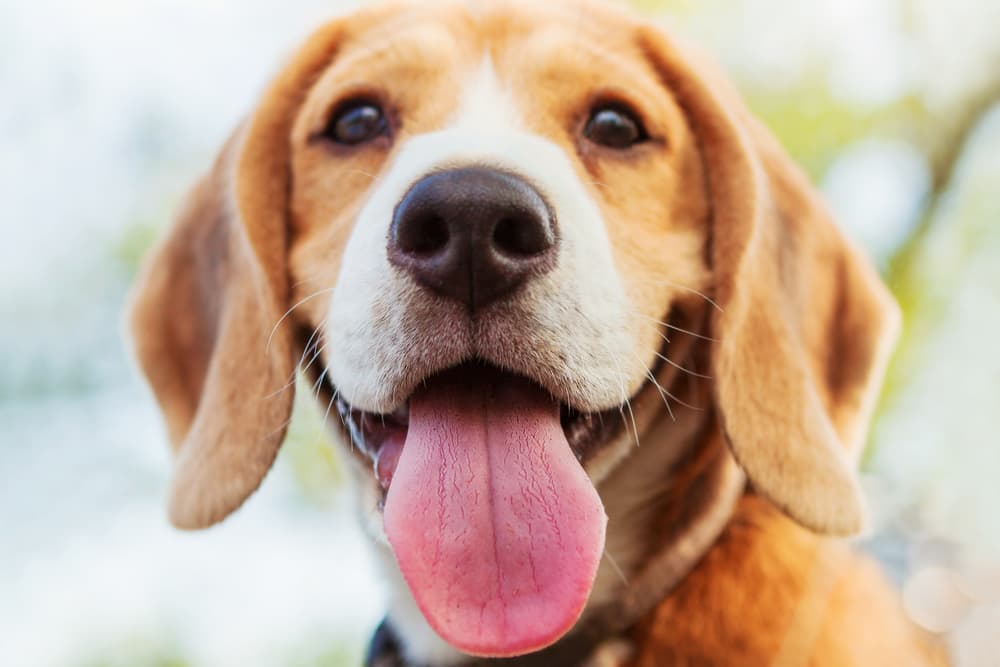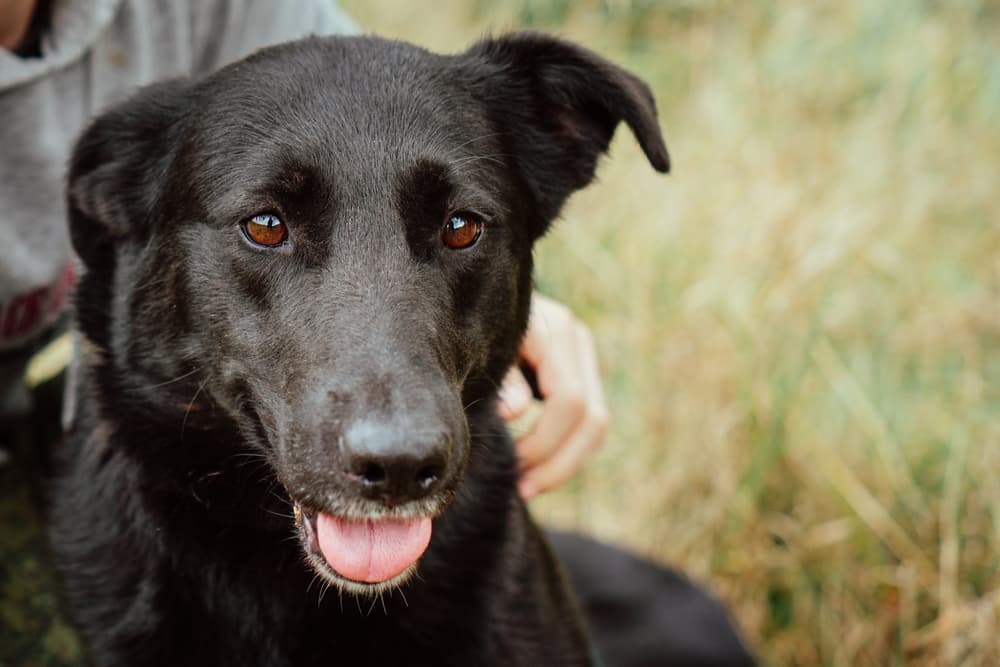Why is My Dog Walking in Circles?

Dogs sometimes engage in behaviors that might seem odd to us. They may eat grass, roll around in smelly muck, sniff other dogs — or walk in circles. Why do dogs walk in circles, exactly? While this behavior can be completely harmless, it may also signal an underlying medical or behavioral issue.
With insights from veterinarians, we’ve outlined some of the reasons—both innocuous and potentially serious—why your dog may be circling or spinning. We recommend contacting your veterinarian for guidance, especially if this behavior has started abruptly, persists, or worsens.
Dog Walking in Circles: When It’s Normal

Sometimes this behavior is instinctual and harmless. Here are a few of the most common benign reasons for a dog walking in circles.
Why Do Dogs Walk in Circles Before Lying Down?
It’s a relatively common behavior in the natural world. “Many canids, and in fact many animals, including cats, foxes, and some rodents may engage in this behavior,” says Dr. M. Leanne Lilly, a board certified veterinary behaviorist and clinical professor at the Ohio State University in Columbus.
While nobody can say with certainty why dogs do this, it’s thought to be a remnant of primitive behavior, says Dr. Jerry Klein, chief veterinary officer for the American Kennel Club, based in New York City. “Dogs are making sure their area is safe and comfortable for them to lie down before rest or sleep.”
Why Do Dogs Walk in Circles Before They Poop?

A dog walking in circles before getting ready to poop may be searching for just the right spot, says Lilly. There are good reasons for this. “It is a vulnerable position to put themselves in, so they may be assessing footing, the best place to leave a message, and safety all in one go.”
Can the Earth’s Magnetic Field Cause a Dog to Walk in Circles?
One study found it possible that dogs align themselves with the Earth’s magnetic field, so theoretically they may be circling to face a certain direction. “When the magnetic fields were calm, the dogs oriented themselves north to south, but when the fields were erratic the north-south behavior was no longer observed,” Lilly explains. It’s still speculation at this point, since no one has been able to successfully replicate this study, “Though a citizen study using this for scientific literacy failed to find this same finding earlier this year,” she says.
Other Harmless Reasons for Circling Behavior in Dogs

In addition to the reasons above, there are some other common reasons you might notice your dog walking in circles:
Scent: Dogs are finely attuned to different scents, including those that originate from their own bodies. “They may briefly spin or circle to sniff or smell at their own rump, which if short and self-limiting, can be just because of a smell,” says Lilly. “My last dog used to jump up and turn to smell her own rump anytime she passed gas.”
Entertainment: Circling can be a way to alleviate boredom or to simply have fun. “Dogs can circle or spin (a faster form of circling) recreationally, a lot like kids. Dogs can and do seek out excitement in their lives,” says Dr. Walt Burghardt, a board certified staff veterinary behaviorist at BluePearl Specialty + Emergency Pet Hospital in San Antonio, Texas.
Medical Reasons for Dogs Walking in Circles

A dog walking in circles can sometimes indicate an underlying medical or behavioral issue, so it’s essential to contact your veterinarian if something seems out of the ordinary.
When an illness is responsible for a dog walking in circles, “there are usually other dispositional signs that a dog is unwell,” says Burghardt. Depending on the underlying conditions, other signs may include:
- Confusion
- Falling to one side
- Panting
- Blindness
- Wobbling
- Standing in a corner
- Vomiting
- Loss of appetite
- Loss of housetraining
- Head shaking, scratching at ears, odor from ears
- Abnormal, rapid eye movement
- Head tilted to one side
The following are some medical reasons why dogs walk in circles.
Ear Conditions

If a dog walks in circles and is disoriented or displays other signs like nausea, vomiting, and weakness, an inner ear condition like vestibular disease may be responsible. Middle ear and inner ear conditions like vestibular disease are frequent culprits, says Burghardt, “especially in ear infection-prone dogs and older patients.” Vestibular disease, which is a condition that affects a dog’s balance and is often confused for a stroke, can be peripheral or central, and is called ‘old dog vestibular disease.’ This condition, while dramatic, requires supporting the dog, and often resolves spontaneously over time.
Canine Compulsive Disorders

Dogs unable to find healthy outlets for their fear and anxiety might instead rely on a number of displacement behaviors, one of which is circling or spinning, says Burghardt.
Some breeds, like Bull Terriers and German Shepherds are thought to be more genetically predisposed to developing canine compulsive disorders. “Terriers, especially Bull Terriers may be more likely to display a behavioral problem with spinning or tail-chasing,” explains Burghardt. “This type of behavior, called compulsive behavior, needs to be fully evaluated and usually needs behavioral, medical, and environmental treatment to help control.”
Neurological Conditions

Trauma, tumors, and infections are examples of neurological conditions that might cause a dog to walk in circles, says Lilly. “Any neurological disease could cause circling, whether that’s in the front of the brain, or if there is a spinal cord problem causing weakness in one side of the body. The dog may naturally drift in very loose circles toward the weak side when not directly attending to things on the opposite side of its body.”
Central vestibular disease can be caused by antibiotics, including amikacin, gentamicin, neomycin, and tobramycin, as well as hypothyroidism, head trauma, tumors, and infections.
Pain and Discomfort

Anal gland disease flea allergy dermatitis, and lower spinal pain, for example can cause a dog to circle tightly, “Or attempting to lick, chew, or bite at the tail or rump,” says Lilly.
Brain Disease
There are several inflammatory brain diseases that could cause circling behavior, such as Pug dog encephalitis. Pug dog encephalitis is a serious disease that causes inflammation and death of the brain tissue. Pugs are genetically prone—about 1.2 percent will develop it—but other small breeds, including Chihuahuas and Yorkshire Terriers are not immune. Other signs of this disease include blindness, seizures, and behavioral changes.
Why is My Dog Walking in Circles?

While only a veterinarian can make a diagnosis, a little observation on your part may provide some clues. Noticing what precedes the behavior, the time of day it occurs, and how long it lasts are some things to watch for, says Lilly.
“If it’s minor, predictable, and is not interfering with any other behaviors (such as circling four to five times before defecating), tell your vet at your dog’s next annual exam and make sure they evaluate your dog’s whole body.”
Dogs who walk in circles before defecating may have trouble or pain when posturing. This would most likely be a concern if the dog is walking in more and more circles over time and is older.
If it’s a sudden or new behavior, interrupting your dog’s ability to eat, sleep, play and rest, is combined with other clinical signs, or is the only way she can walk, then seek veterinary care as soon as possible, she says.
What to Do if Your Dog Keeps Walking in Circles

There are two main factors to watch for that may indicate that the circling is serious, and that you should contact your veterinarian.
The Behavior is Persistent. “Especially if there is any other indication that a pet might not be feeling well or is causing itself injury. These are clear signals that your pet should see their attending veterinarian to start the diagnostic process,” says Burghardt.
The Behavior Develops Abruptly. Circling that develops abruptly or that quickly gets worse, oftentimes indicates an issue, says Burghardt. “In these cases, a veterinary visit is recommended as soon as practical. When these behaviors are associated with disorientation, seizures or collapse an emergency visit is usually the best option.”
Getting Ready to Talk to Your Veterinarian

Be ready to answer questions your veterinarian might have, recommends Lilly. These include questions about eating, drinking and resting patterns, when the behavior occurs and how often, the length of time it lasts, and whether the dog responds when you call her name.
Veterinarians also say it helps for them to see a video of your dog walking in circles. “Getting one or more short clips of the behaviors of concern can often help your veterinarian or veterinary specialist to help sort things out,” offers Burkhardt.
Dog Walking in Circles: Diagnosis and Treatment

What can you expect when you take your pup in for the diagnostic exam?
Diagnosing a Dog Walking in Circles
There are no specific tests for circling or spinning, says Burghardt. “However, your veterinarian will often start with a complete physical and neurological examination and laboratory screening tailored to your individual pet.”
The exam might include an orthopedic evaluation, spinal pain evaluation, and reflex testing, says Lilly. “Some dogs may need advanced imaging (MRI) as that’s our best [way of] evaluating the brain, spinal cord and surrounding fluid and tissue.”
Treating a Dog Walking in Circles

Treatment will depend on the underlying cause. For example: “For problems that involve distress or appear to be compulsive in nature, a combination of anti-anxiety or antidepressant medications with environmental enrichment and targeted training to teach more productive behaviors often help,” explains Burghardt. “Follow-up for behavioral cases often involves periodic owner-conducted assessments of the degree of improvement seen in their pet.”
Compulsive disorders are a diagnosis of exclusion, says Lilly. “We have to rule everything out first, including pain.” Your veterinarian will be able to walk you through treatment for your dog if needed. The cause of circling, once determined, can often be resolved with the help of professionals, so do not hesitate to reach out to your local veterinarian.









